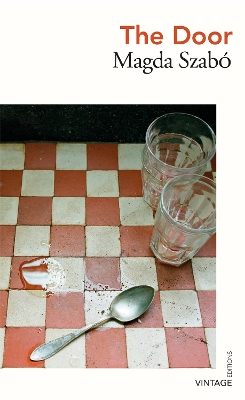Reviewed by Michael @ Knowledge Lost on
The first thing that sticks out to me in this novel is the relationship between Magda and Emerence. I am drawn to the raw approach Magda Szabó took to explore this relationship. There are times where there was heat and toxicity between the two but then there were other times of affection and love. It is rare to read a relationship written so well. I often feel like the nuances of a relationship are never explored to any satisfactory level. In The Door we get to experience the ups and downs of this relationship. There are many times I felt frustrated by their actions but that ends up just being their different personalities butting heads.
Throughout the novel, a door is used as a metaphor to give the reader a more in depth look at these two characters. At times the door is a symbol of secretiveness, especially when it comes to Emerence. However there are times that it is used to symbolise the current state of their friendship. Whether they were actively distancing themselves from each other or they were close enough to share in a secret. The effect of the door becomes an important symbol of understanding Emerence. The fact that she would greet her guests outside and never let them inside shows just how close the two have become when she lets Magda inside.
Set between 1960 and 1980 in Hungary, it is important to know that this was when the Hungarian Socialist Workers’ Party was in control. If you explore this relationship of Magda and Emerence under a Marxist lens you will see where I am going here. We have Magda representing the intelligentsia and Emerence is a symbol of the working class. The idea behind the Bolshevik Revolution was to make sure people were treated the same. Without the working class, the October Revolution would have never happened. However it was the intelligentsia that took leadership, essentially creating a new social class system, thus negating their whole revolution.
In the end of The Door we are left we are left with the emptiness of losing Emerence. This woman seemed to possess inhuman strength and drive and her death left such a big hole not only Magda’s life but the whole community. If I was to compare Emerence death with the state of Hungary at the time of writing this novel. I would say that this is a reflection of the Hungarian economic and political reforms which let the country into mounting foreign debts. The cause of this points to Hungary’s outdated manufacturing facilities the inability to produce goods that were saleable on world markets.
It might be my love for Soviet literature, but my approach to this was very much a Marxist approach. Like many books in the Soviet era, I think The Door explored so many interesting elements of the country’s political and social issues. From religion to the class struggle and then the death of the working class. Analysing a novel and looking at the historical context really opens up the book for me. I know some people do not appreciate literary theories but for me it is a way to bring the text to life. Marxism and psychoanalysis are the two methods I seem to use the most, but I do not think I am equipped to fulling analyse Emerence. Although Magda might be easier, same name as the author, a writer, an enemy to the Communist Party, sounds autobiographical to me. Which makes me wonder, what was she trying to say with the death of Emerence?
This review originally appeared on my blog; http://www.knowledgelost.org/book-reviews/genre/classic/the-door-by-magda-szabo/
Reading updates
- Started reading
- 6 August, 2018: Finished reading
- 6 August, 2018: Reviewed
